We have come a long way since the original AMD EPYC 7002 series launched in what we dubbed a “knockout.” AMD is poised for a double-digit server share for the first time in a long time. Intel has re-shuffled its product stack landing massive discounts often well over 60% with the Big 2nd Gen Intel Xeon Scalable Refresh. Intel also cut its next-gen mainstream dual-socket Intel Cooper Lake offering that was set to launch this quarter. While Intel has approached the EPYC 7002 thread by changing pricing and focusing its future products, AMD is now expanding its SKU stack and going directly at one of Intel’s high-margin businesses: frequency optimized SKUs. The launch of the AMD EPYC 7Fx2 frequency optimized CPUs, including the AMD EPYC 7F52 we are benchmarking and reviewing in this piece, AMD is entering a new higher-value (per core) business.
Instead of sticking to our normal server CPU review format for this one, we are going to go more in-depth with this piece into the how and why as we did in the previous generation’s AMD EPYC 7371 review which is the EPYC 7F52’s predecessor.
AMD EPYC 7Fx2 Series Impact Video
We did a companion video to this piece that you can watch here:
We have more detail in this article, but for those who want to simply listen to a version of this article, we discuss some of the key points.
AMD EPYC 7Fx2 Series Overview
Welcome to the TDP expansion era. For years, Intel has been marketing its chips as the most power-efficient with low TDP/ core values driving density. That power efficiency was largely driven by a manufacturing process lead. While this may change in the future, Intel now finds itself at a manufacturing process disadvantage so we no longer hear that marketing mantra.
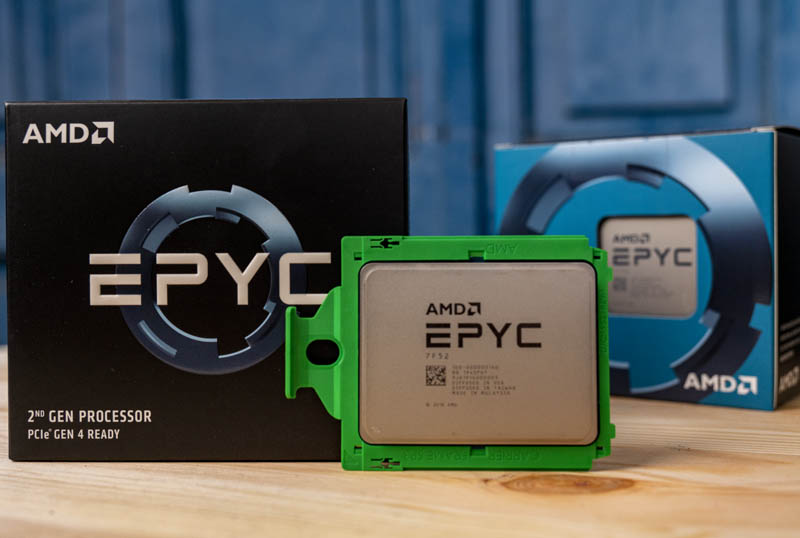
Instead, we are entering a phase of rapid TDP expansion. The 2nd gen Intel Xeon Scalable line remained steady at a maximum (public SKU) TDP of 205W whereas the 2016-2017 era Xeon E5-2699(A) had a 145W TDP. We saw the AMD EPYC 7742 hit 225W TDP, but delivers up to 64 cores at that figure. There is a 64-core HPC part, the AMD EPYC 7H12, that has a 280W TDP.
We now have a 16 core CPU with a 240W TDP in the AMD EPYC 7F52. The simple reason is this: data center customers are more than happy to pay to get more performance per core. Now that Licenseageddon Rages as VMware Overhauls Per-Socket Licensing, per-core licensing is the dominant model in the hardware-based licensing industry. You can learn more about that in our video here if you prefer to listen rather than read that piece:
That means there is an intense focus on getting more performance per core, and that is the backdrop that AMD is using to launch its frequency optimized EPYC 7Fx2 line.
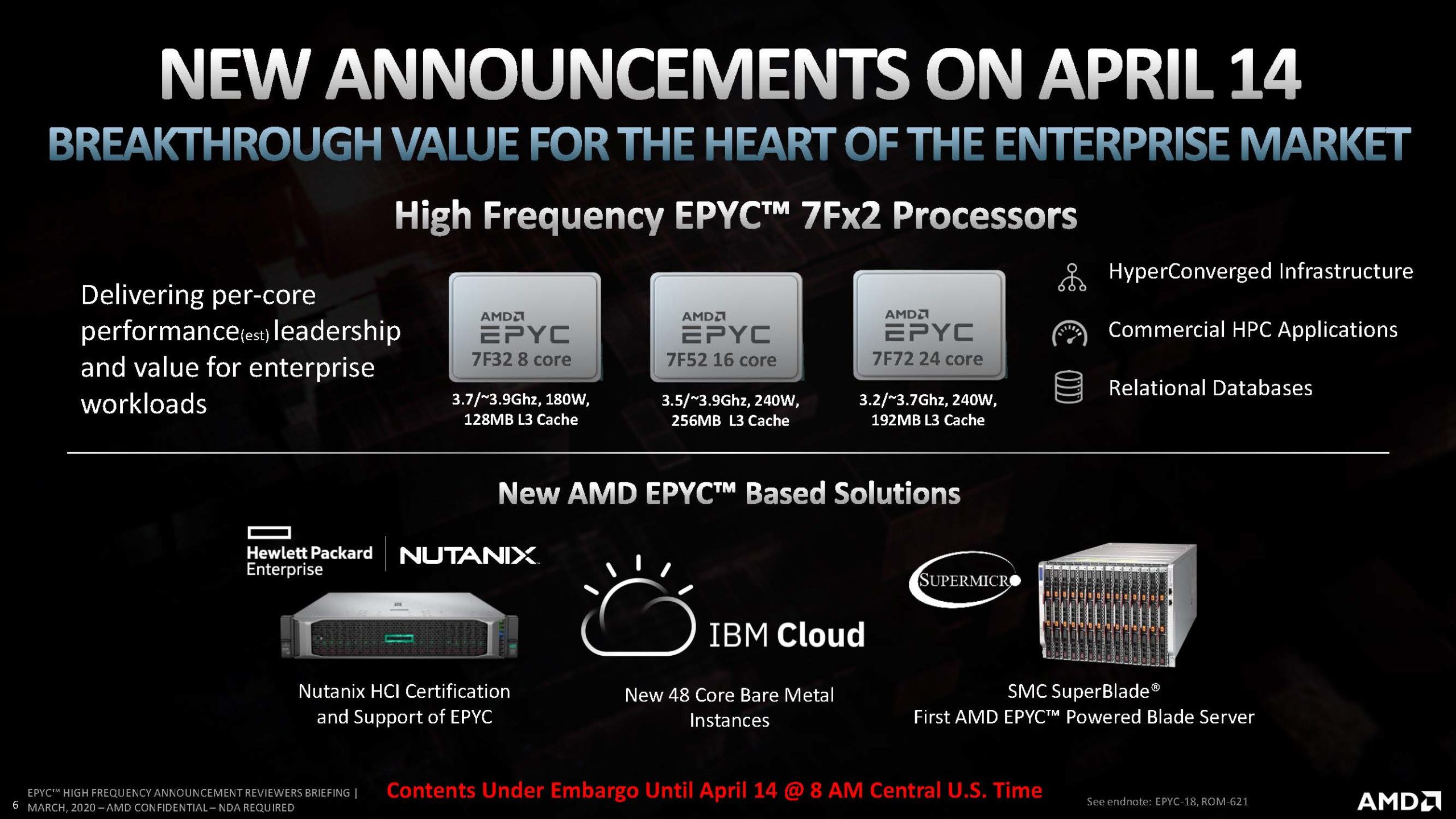
There are three new SKUs. The AMD EPYC 7F72 is a 24-core part with a 3.2GHz base and 3.7GHz turbo clock, 240W TDP, and 192MB of L3 cache. Our review is focused today on the AMD EPYC 7F52, a 16-core 240W TDP 256MB L3 cache part that runs in the 3.5-3.9GHz range. Finally, there is an 8-core 3.7-3.9GHz AMD EPYC 7F32 part with a 180W TDP and 128MB L3 cache. These are very high TDP to core count parts. with >= 10W TDP/ core ratios.
Putting this into some context, here is what the new 8-24 core, dual-socket capable SKU stack looks like from AMD.

As you can see, these new 7Fx2 chips offer strikingly higher TDP and significantly higher prices per core than alternative options along with their clock speeds. AMD is able to do this because they are offering significantly more performance per core. Here is AMD’s slide with the above subset of CPUs showing its competitive impact using dual-socket SPECrate2017_int_base which is a widely used benchmark for data center purchasing.
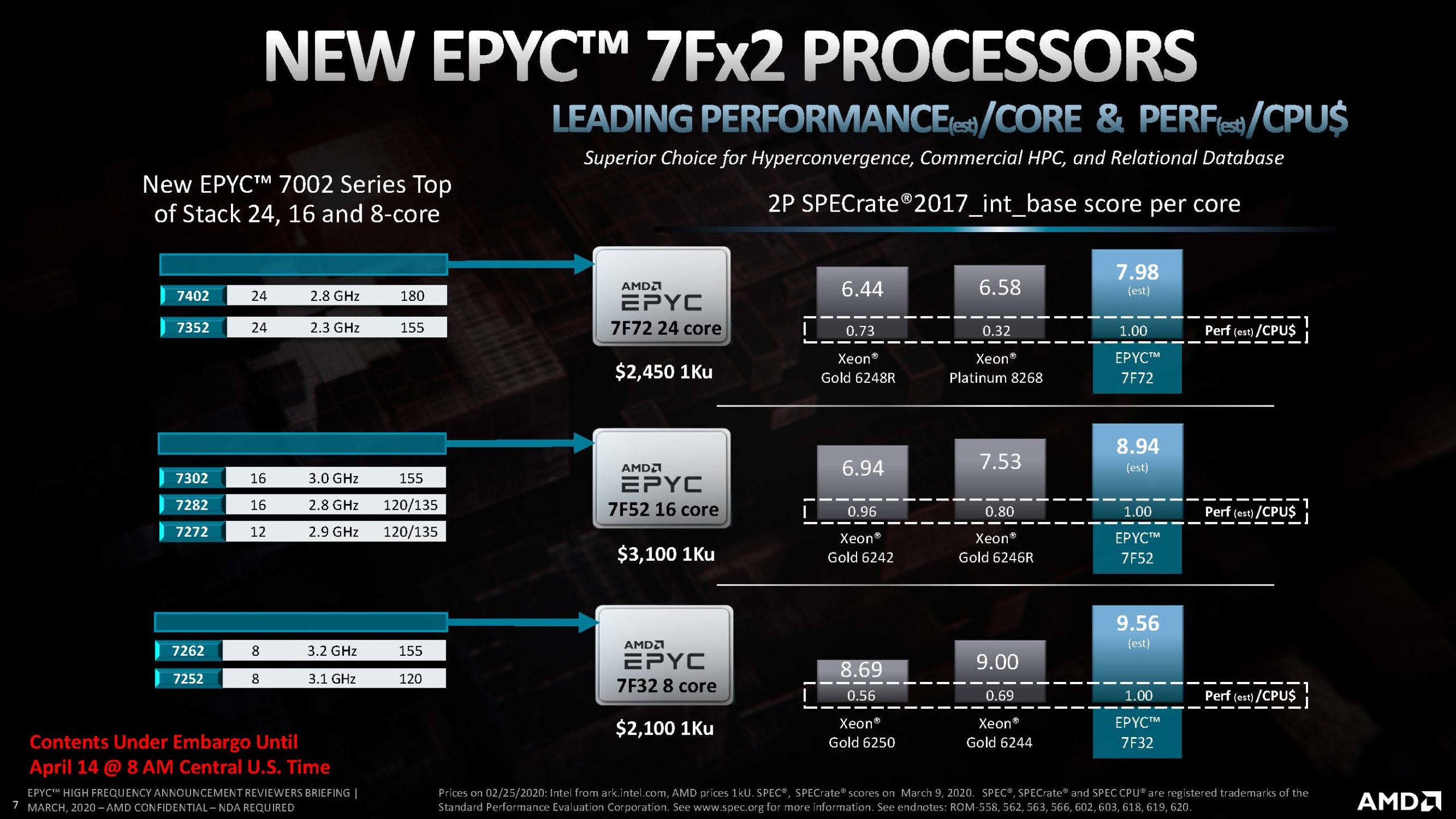
Here AMD is aiming for leadership performance, as well as leadership performance per dollar. We are going to discuss this more in our market impact section, but let us be clear, AMD is now extracting a premium for this capability. Here are the new SKUs in context of other AMD EPYC SKUs on a $(USD) list price/ core basis:
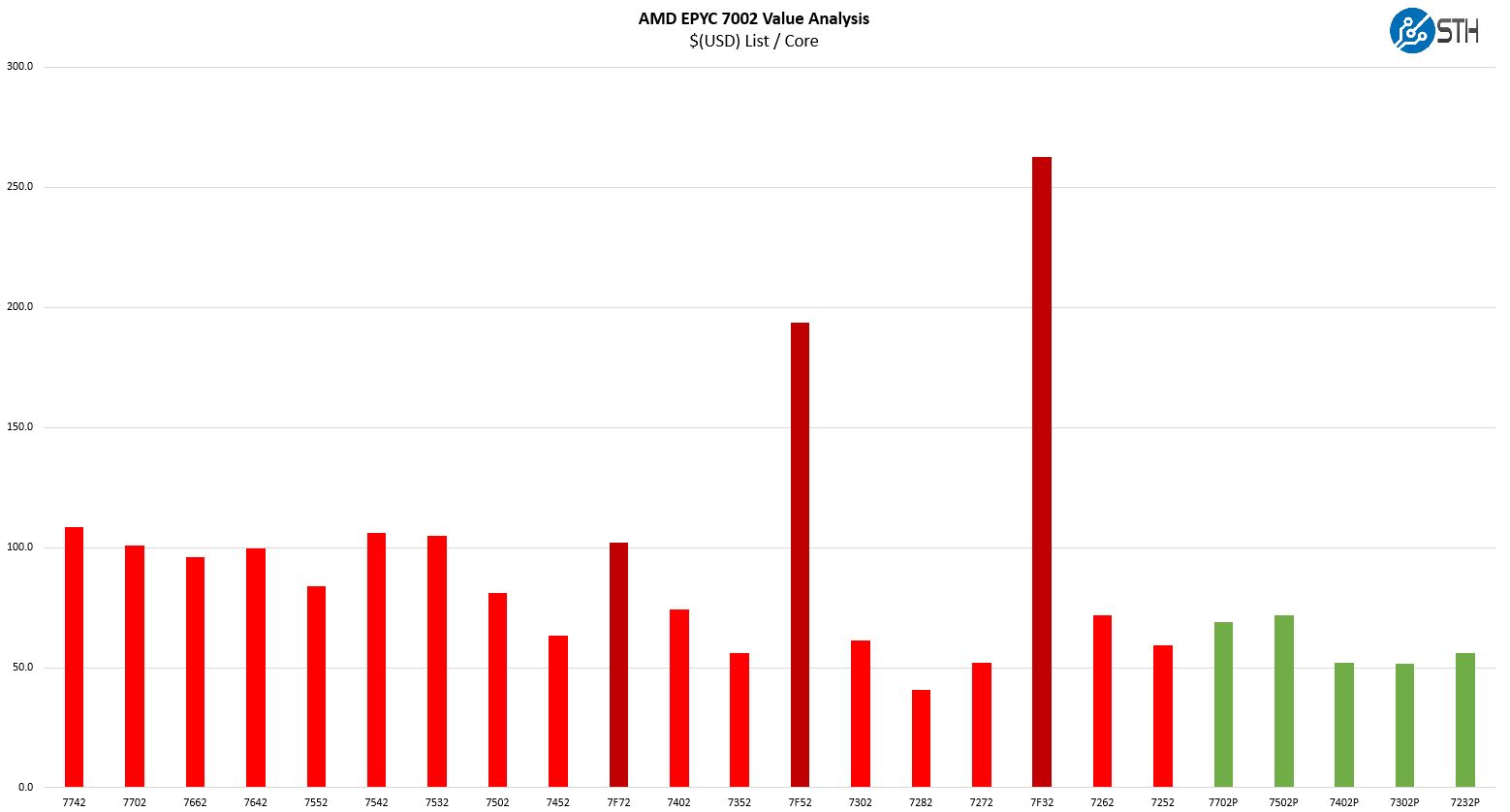
As one can see, while the 7F72 is in-line with higher-core count parts, the 7F52 and 7F32 are effectively breaking new ground for the AMD EPYC 7002 series pricing. AMD is charging somewhere around 2-2.5x the cost per core of even the 64-core parts. Again, we will have more in our market analysis section, but this is actually more in-line with Intel’s frequency optimized parts but we wanted to show that this is absolutely new territory for AMD. For some context, the EPYC 7F52 is twice the $1550 list price of the previous-gen 16-core frequency optimized AMD EPYC 7371. That shows just how much more performance and leverage AMD thinks it has with the new parts.
Effectively what AMD is offering is a chip with comparable clock speeds to what Intel is offering, but with more DDR4 channels/ memory capacity, faster DDR4, more cache, faster and more PCIe connectivity at around the same price as the new refresh Xeon Gold 6246R. Although it may be more expensive than the Xeon Gold 6242, AMD offers a fairly massive platform for dual-socket servers. The Xeon Gold 6242’s we tested in a quad-socket configuration and they are now effectively a last-gen dual-socket part or a current-generation quad-socket part.
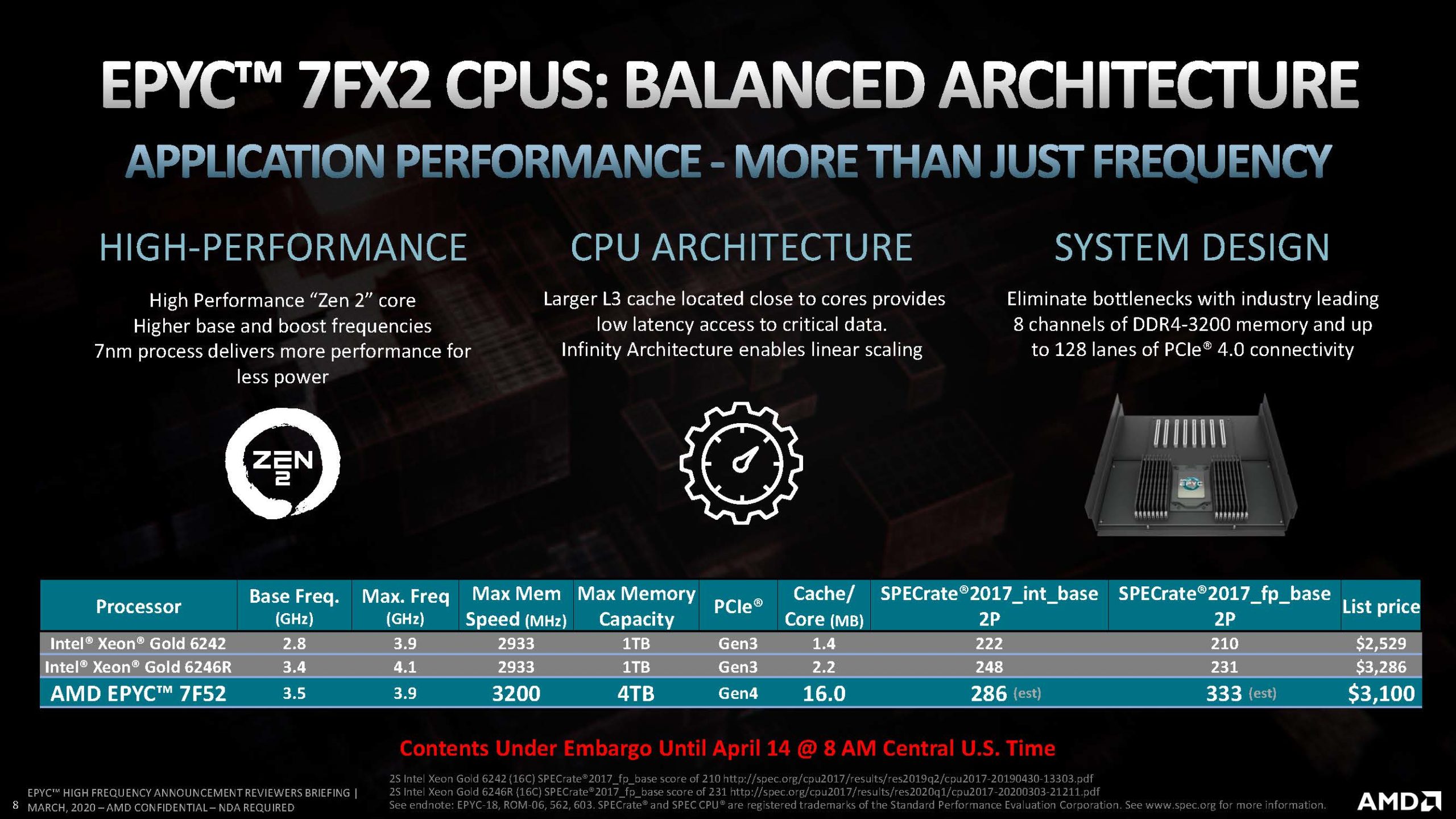
AMD is directly catering to per-core licensed software markets showing Microsoft SQL Server 2017 results.
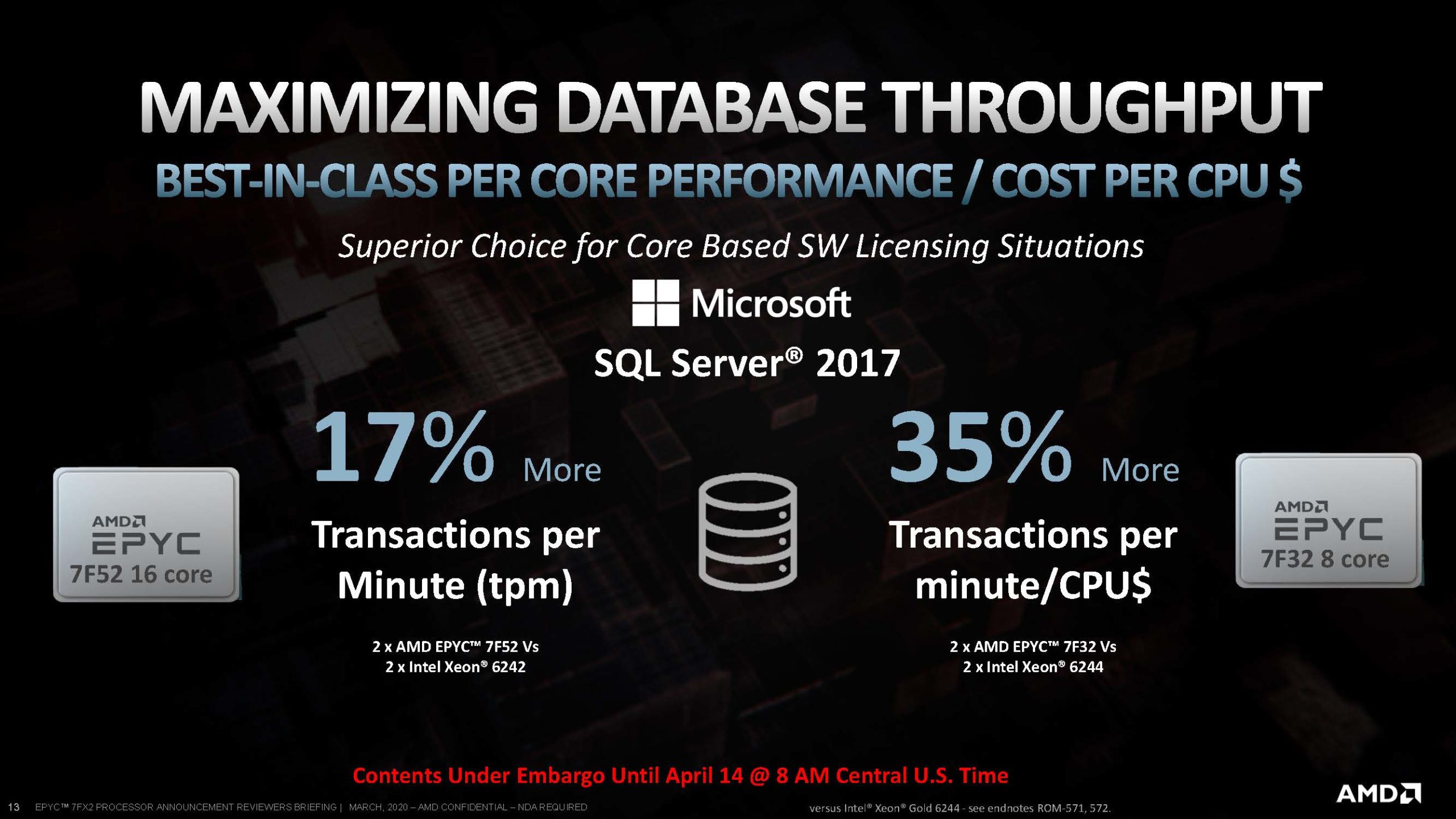
The company is also showing off various enterprise HPC-style workloads in their marketing deck.
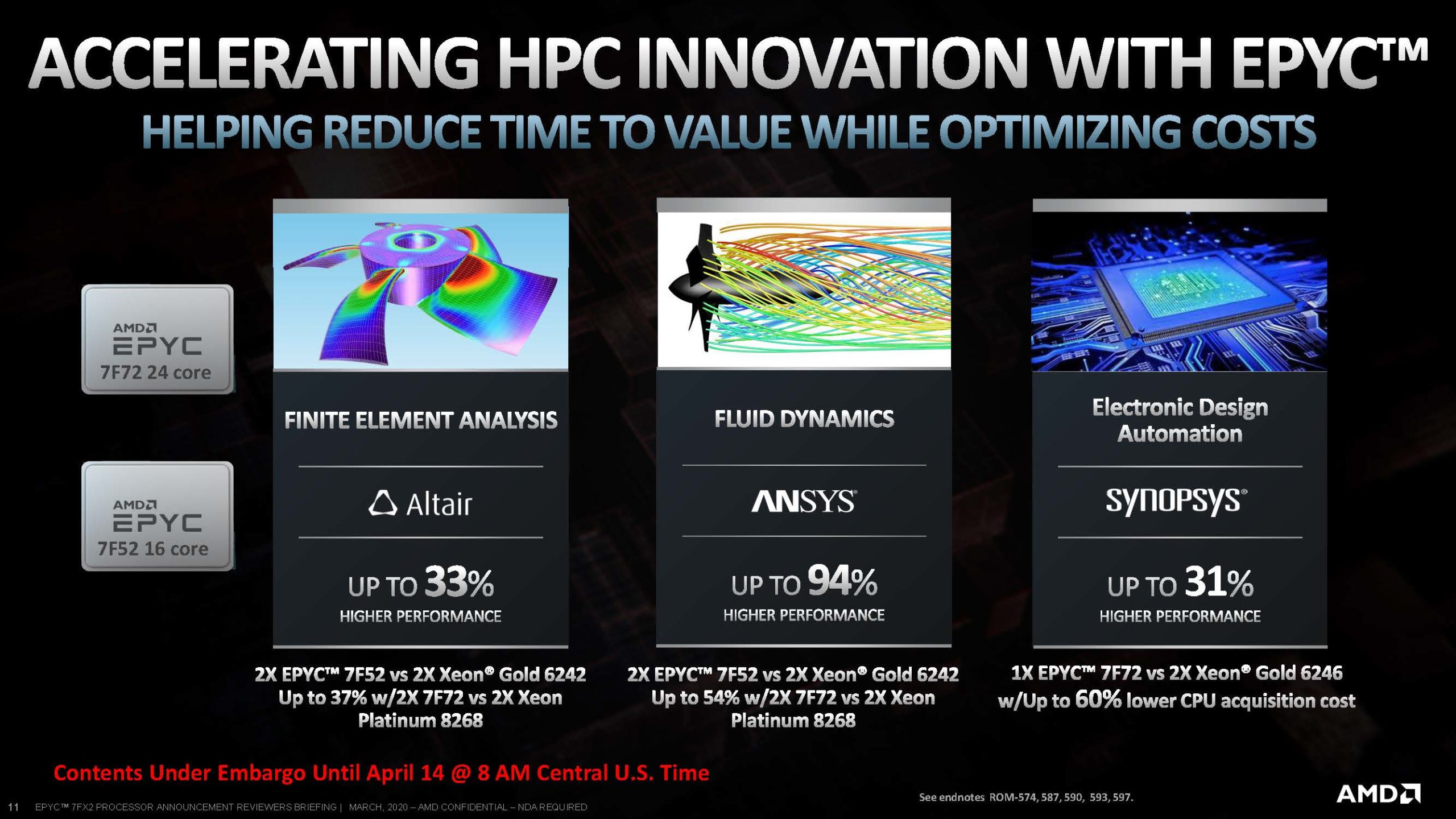
With that context, let us now move to the actual CPU we are going to review today, the AMD EPYC 7F52.

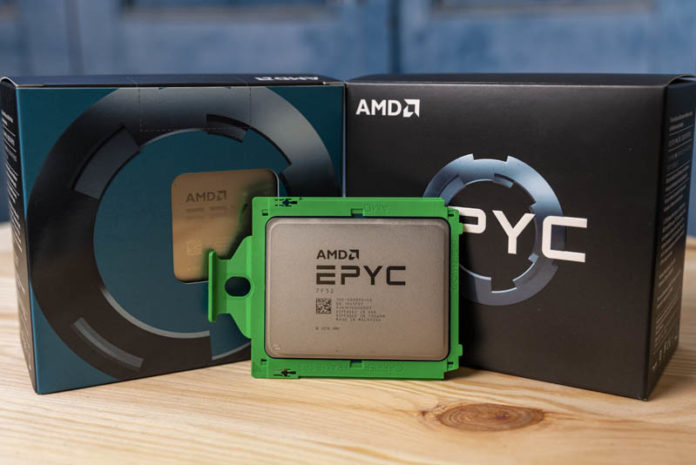



These are the SKUs that should be thought of as True Workstation class parts and the higher clocks are welcome there along with the memory capacity and the full ECC memory types support.
So what about asking Dell and HP, and AMD, about any potential for that Graphics Workstation market segment on any 1P variants that may appear. I’m hoping that Techgage can get their hands on any 1P variants, or even 2P variants in a single socket compatible Epyc/SP3 Motherboard(With beefed up VRMs) for Graphics workloads testing.
While in the 7F52 each core gets 16MB of L3 cache, that core has only 2048 4k page TLB entries which only cover 8MB. It would be interesting to see how much switching to huge pages improves performance.
I find the 24 core part VERY interesting, just wish they released P versions of the F parts.
Your 16 core intel model is wrong.
16 cores from a 28 core die could still be set up to have the full 28 cores worth of L3 Cache.
Hi Jorgp2 – this was setup to show a conceptual model of the 16-core Gold 6246R which only has 35.75MB L3 cache, not the full 38.5MB possible with a 28 core die
Hi ActuallyWorkstationGrade, if you are going to convince HPE/Dell about 1CPU workstation then IMHO you will have hard fight as those parts are more or less Xeon W-22xx competitive which means if those makers already do have their W-22xx workstation, then Epyc workstation of the same performance will not bring them anything. Compare benchmark results with Xeon W-2295 review here on servethehome and you can see yourself.
Sometimes I read STH for the what. In this “review” the what was nowhere near as interesting as the “why”. You’ve got a great grasp on market dynamics
whats the sustained all core clock speed
I have said it before and this release only highlights the need for it:
You need to add some “few thread benchmarks” to your benchmark suite !
You are only running benchmarks that scale perfectly and horizontally over all cores. This does not massage the turbo modes of the cores nor highlights the advantages of frequency optimized SKUs.
In the real world, most complex environments are built with applications and integrations that absolutely do not scale well horizontally. They are most often limited by the performance and latency of a lot fewer than all cores. Please add some benchmarks that do not use all cores. You can use exisiting software and just limit the amount of threads. 4 – 8 threads would be perfectly realistic.
As you correctly say, the trend with per core licensing will only make this more relevant over time. Best is to start benching as soon as possible so you can build up some comparison data in your database.